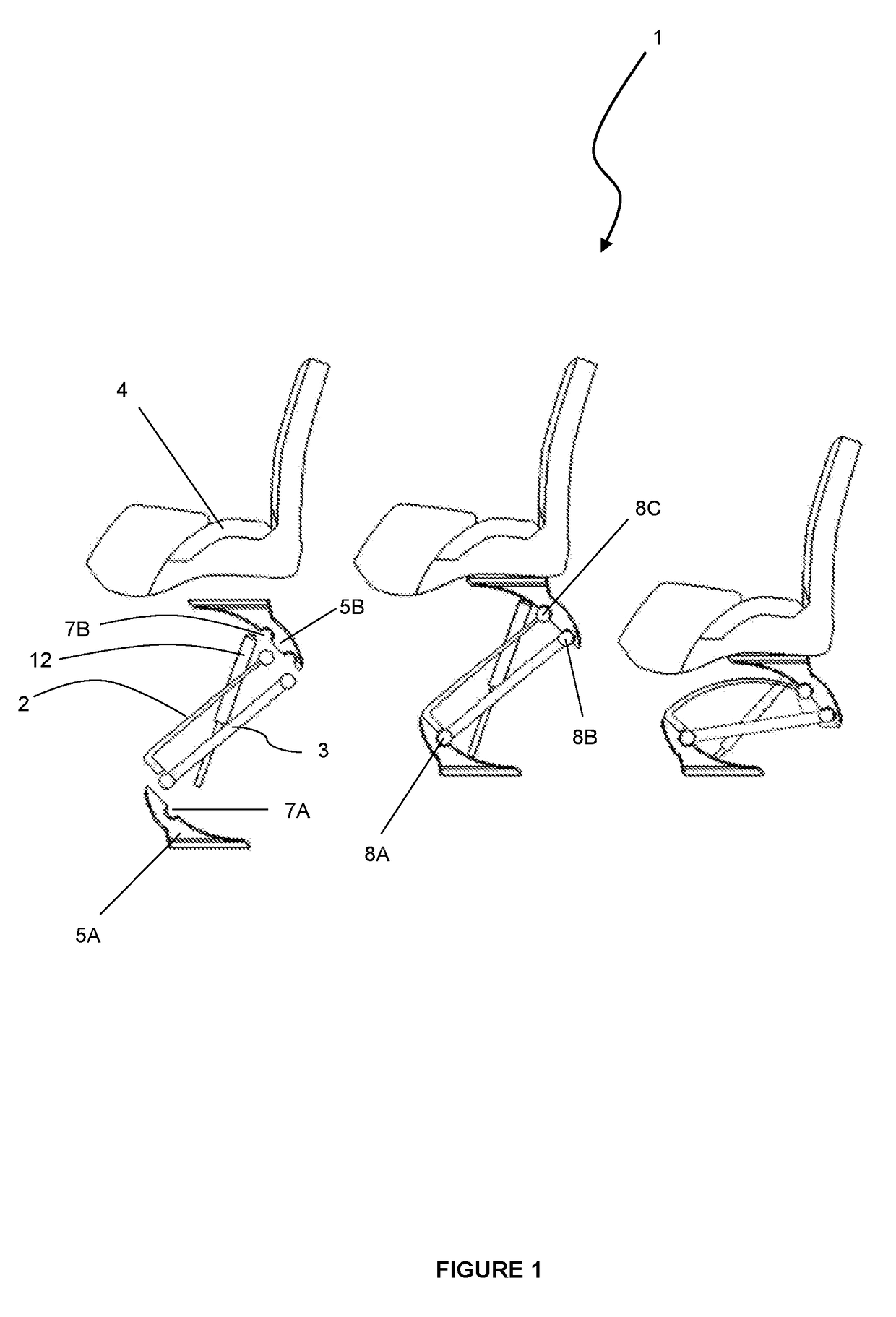A shock mitigation apparatus
a technology of shock mitigation and shock absorber, which is applied in the direction of shock absorbers, vessel parts, vessel construction, etc., can solve the problems of high-performance watercraft, physical injury, and passengers subjected to repetitive high g-forces, and achieve the effect of convenient configuration
- Summary
- Abstract
- Description
- Claims
- Application Information
AI Technical Summary
Benefits of technology
Problems solved by technology
Method used
Image
Examples
working examples
[0133]The above described shock mitigation apparatus and uses are now described by reference to specific embodiments and examples.
[0134]Example 1—Single Cantilever Leaf Spring Combined with Stabiliser Arm
[0135]Referring to FIG. 1, a series of side views of a shock mitigation apparatus 1 that includes one leaf spring 2 and a stabiliser arm 3 are shown (from left to right): an unassembled apparatus 1 with exploded view of components, an assembled apparatus 1 upon an upward rebound stroke, and an assembled apparatus 1 during a compression stroke.
[0136]The shock mitigation apparatus 1 also includes a seat member 4 in the form of a pommel design as illustrated and lower and upper mount members 5A,B manufactured out of injection moulded plastic in known fashion. The lower mount member 5A is attached to the sole of a boat (not shown) with fasteners and reinforcing plates / washers (not shown) in known fashion. Optionally, and best seen in FIG. 12, the lower mount member 5A may be securely mo...
PUM
 Login to View More
Login to View More Abstract
Description
Claims
Application Information
 Login to View More
Login to View More - R&D
- Intellectual Property
- Life Sciences
- Materials
- Tech Scout
- Unparalleled Data Quality
- Higher Quality Content
- 60% Fewer Hallucinations
Browse by: Latest US Patents, China's latest patents, Technical Efficacy Thesaurus, Application Domain, Technology Topic, Popular Technical Reports.
© 2025 PatSnap. All rights reserved.Legal|Privacy policy|Modern Slavery Act Transparency Statement|Sitemap|About US| Contact US: help@patsnap.com



